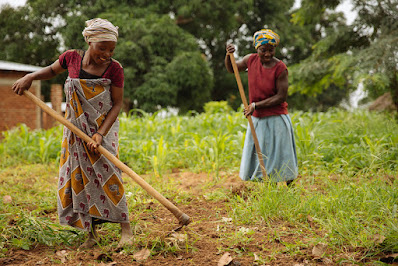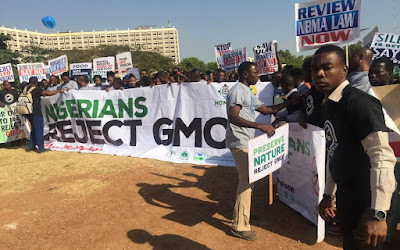Water Scarcity: The Reality or a Metaphor?
In the last post, I highlight the importance of holding a more careful view of some overall thinking and statistics on African issues. In this post, I will continue this argument and discuss the complexity of water issues in Africa, by reflecting the concept of water scarcity, which is often misused when talking about water issues in Africa.
Water scarcity is a concept that is often used (and misused) when talking about African water issues. Organizations aiming to solve water-related problems often use statements like "around 5 billion people could be living in areas of water scarcity by 2050" to catch readers' attention. However, people seldom really understand this concept nor realize how it might oversimplify water issues when using it.
Then what is water scarcity?
A series of indicators are developed to measure water scarcity in the last few decades. Falkenmark (1989) devised one of the first metrics, the water stress index (WSI), and started formal quantification of water scarcity. WSI defines a threshold for water stress, which is 1000 m3 per capita per year. Such crude quantification presumes a universal water demand and this could be fixed by another metric named withdrawal-to-availability ratio (WTA), which defines water scarcity by the ratio of water demand from different sectors to annual renewable freshwater (Raskin et al., 1996).
These two metrics both are more inclined to "physical" water scarcity and have plentiful limitations as reflected by Damkjaer & Taylor (2017). For instance, using mean annual river runoff (MARR) to estimate available freshwater resources would ignore other components like groundwater storage in the hydraulic cycle, which is also an important water source for agriculture and domestic consumption in Africa (MacDonald et al., 2012). Calculation on a yearly basis implicitly neglects the seasonal variability of river discharge, which is especially influential to water availability in semi-arid and arid regions. The potential of storage to improve water accessibility is also excluded. A number of other metrics are designed to address these limitations and include social, economic and environmental factors in water scarcity. However, possibly due to their simple and relatively less-cost calculation mechanism, WSI and WTA are still widely used in large scale statistics (see for example Figure 1).
Beyond water scarcity...
Unlike some static resources like land, water is a very complex resource. The water cycle contains a series of dynamic and interactive components like rainfall, evaporation, soil moisture and groundwater storage. Water resource has "enormous temporal and spatial variations as well as variations in quality that completely govern its value to people and ecosystems" (Rijsberman,2005).
As discussed above, the concept of water
scarcity implied in some large-scale metric statistics oversimplifies water
issues. Various hydraulic conditions and social-economic backgrounds are hidden
in single indicator maps like Figure 1. It is important to jump out of the concept
of water scarcity and realize people who live in "no water scarcity" regions can also
lack safe drinking water due to poor or unaffordable water services. Similarly,
some regions defined as water-scared might indeed don't face severe water
issues if abundant groundwater storage could supplement water supply.
It's also crucial to recognise Africa's existing geographical
heterogeneity in terms of water resources. Africa has a diverse range of
climatic systems, ranging from humid equatorial to seasonally dry tropical to
sub-tropical Mediterranean climates (Goulden et al., 2010). Mean annual precipitation
in African river basins could range from less than 500mm to more than 1,500mm
within the continent (Figure 2). The impact of climate change would also impose
various influences in different regions of the continent (I will explore this
more in the next post). The problem with Africa's water resources is
significantly more intricate than just declaring that a particular number of people are living in water-scarce regions.
In short, this post continues to against the overgeneralization of African water issues, as the reality of water resources in Africa is far more complicated than the concept of water scarcity. Especially when it comes to water resource management, it is important for us to move away from these large-scale statistics of water conditions to find more context-specific solutions.





Your idea of water scarcity and arguments for and against conventional metrics for measuring water scarcity is well laid out. It was also useful that you focused on the misconception and complexity of water scarcity. You presented a good engagement with the literature but your references need to be embeded.
回复删除I am glad that you like this post and thank you for reminding me to improve the embedding references!
删除